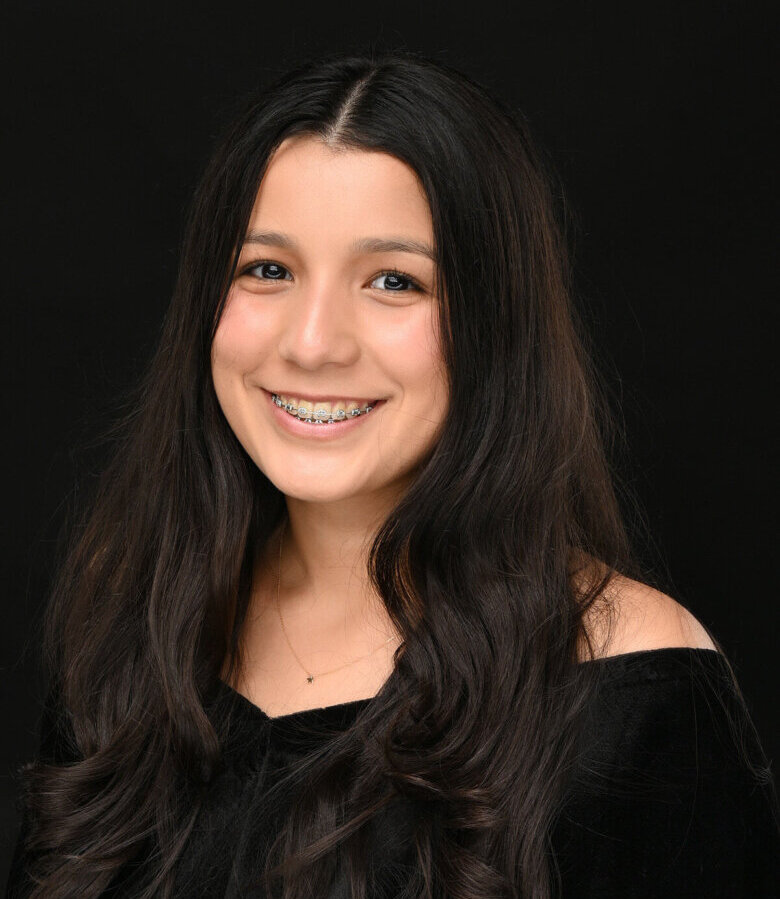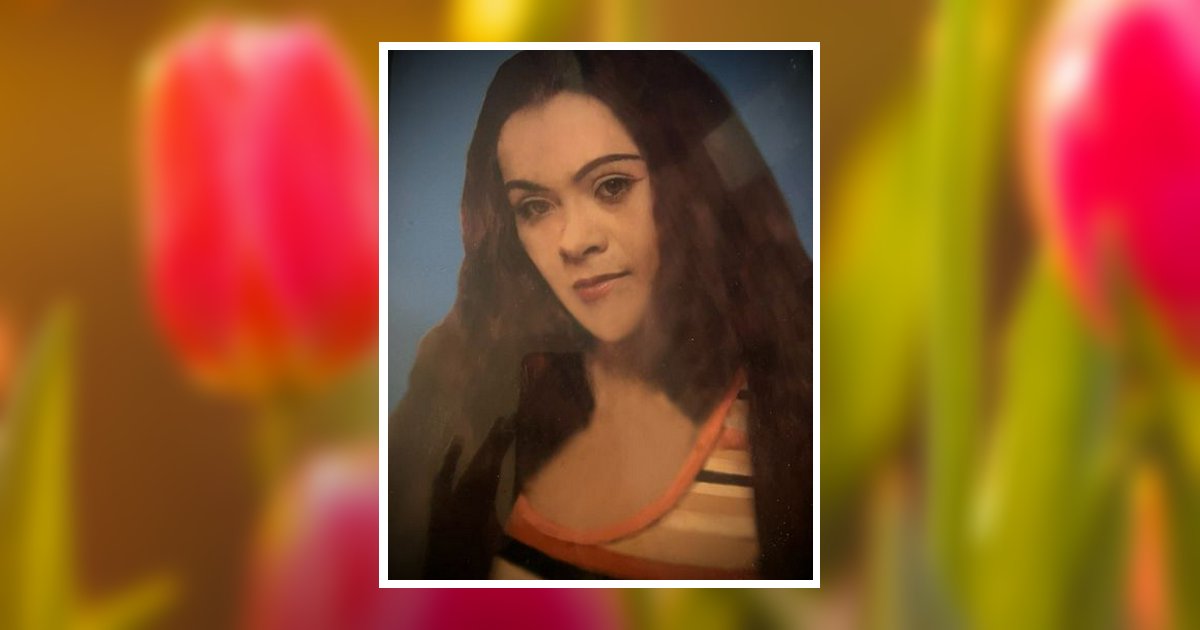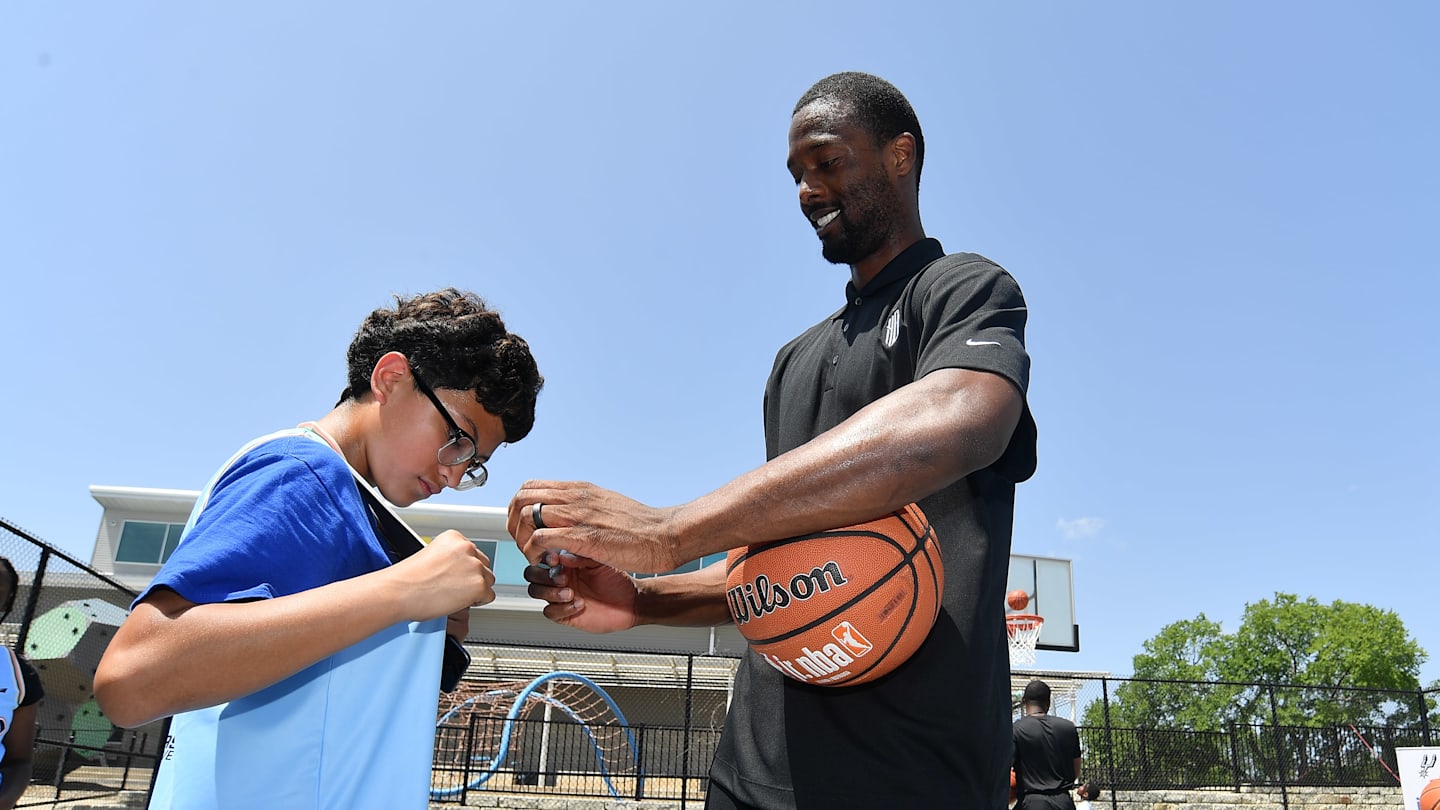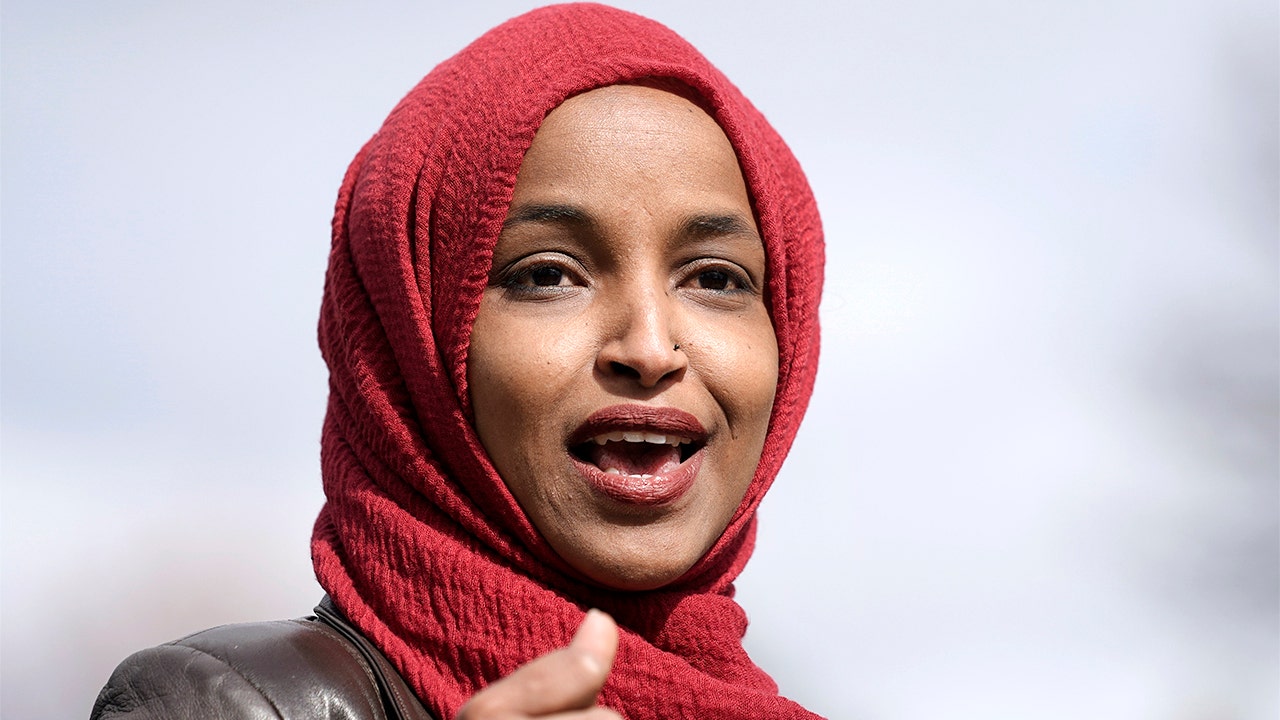Politics
Opinion: Jimmy Carter had a second term. It just wasn't in the White House

At a campaign event in Winston-Salem on the eve of the 1976 North Carolina Democratic primary, a voter asked then-candidate Jimmy Carter whether he was a “born again” Christian. Carter, a Southern Baptist Sunday-school teacher, replied that, yes, he was “born again,” thereby sending a legion of journalists from outside the Bible belt to their Rolodexes to figure out what in the world he was talking about.
Carter sought throughout his life to act on the principles of his faith, which was defined in part by the extraordinary activism of 19th century evangelical Christians who worked assiduously on behalf of those Jesus called “the least of these.” They were involved in peace crusades and helped to organize public schools so that the children of those less affluent could become upwardly mobile. Northern evangelicals worked for the abolition of slavery. They supported prison reform and women’s suffrage.
Carter’s progressive evangelicalism was very much in that tradition. He was sensitive to racial inequalities from a young age and tried to address them — as school board member, as governor and as president. He supported women’s equality, including the proposed Equal Rights Amendment.
As president, Carter tried to nudge American foreign policy away from its reflexive Cold War dualism toward an emphasis on human rights. He recognized that if the United States were to have any meaningful relationship with Latin America, we needed to attenuate our colonialism, so he pushed through the ratification of the Panama Canal treaties. He advanced peace in the Middle East farther than any of his predecessors (or successors), and he appointed more women and people of color to federal office than any previous president. Many environmentalists consider him the best president ever for their cause.
Carter’s failure to win reelection in 1980 devastated him. He departed Washington for Plains, Ga., at 56, the youngest president to leave office since William Howard Taft.
Rosalynn was especially embittered by the election loss. In one of our interviews decades after the 1980 election, Carter told me that in the course of his frequent reassurances to his wife that they still had productive years ahead of them, he began to believe his own rhetoric. He also conceded that if he had been president for four more years, that second term would not have been nearly so fruitful as the alternative turned out to be.
Carter’s post-presidency began with a middle-of-the-night idea. In addition to a presidential library, Jimmy told Rosalynn, “We can start an adjacent institution, something like Camp David, where people can come who are involved in a war. I can offer to serve as a mediator, in Atlanta or perhaps in their countries. We might also teach how to resolve or prevent conflict.”
This would be an entirely new model for out-of-office presidents — a privately funded nonprofit center to advance his goals and allow him to address issues he would have pursued if he’d stayed in the White House.
In a list of basic principles for the center, Carter stipulated that it would be nonpartisan and that it would not duplicate the programs of other institutions, such as the United Nations. Most important, Carter wanted an “action agency,” an institution devoted to change rather than simply “theoretical or academic analysis.”
The Jimmy Carter Presidential Library and Museum, along with the Carter Center, was dedicated in Atlanta on Oct. 1, 1986, Carter’s 62nd birthday. His faith undeniably informed every effort at the center. Carter told an interviewer in 1988 that the life of Jesus had always been his guide. “I don’t see any disharmony in this life between evangelistic effort on the one hand and benevolent care of people who suffer or who are in need on the other,” he said. “I think they are intimately tied together.”
Carter understood problems afflicting the world as spiritual challenges in part, noting that industrialized Western society had failed to adopt Christian principles of concern and caring. He believed that people of privilege, and especially people of faith, bore a special responsibility for those less fortunate, for those who suffer and are deprived. “That’s where Jesus spent all his ministry,” Carter said. Piety alone wasn’t sufficient; followers of Jesus must live out their convictions with acts of charity.
Early on, Carter identified access to healthcare, including mental healthcare (one of Rosalynn’s concerns), as a fundamental human right, noting at one point that 40,000 children die every day from preventable diseases. Using education and simple, low-cost methods, the Carter Center’s health initiatives addressed “neglected tropical diseases”: lymphatic filariasis, trachoma, schistosomiasis and malaria. Other programs targeted guinea worm and river blindness (onchocerciasis), extraordinary initiatives that have achieved near eradication of those diseases in regions where the Carter Center has been active.
Peace and conflict resolution, the second focus of the Carter Center, built on Carter’s success in negotiating the Camp David accords. “We need to deal with other people with mutual respect,” Carter told an audience at Messiah College in 1988, “and through that kind of approach there can be peaceful resolution of differences through the use of diplomacy and negotiation, not through the use of military power.”
The center conducted programs on democracy and human rights and monitored elections in dozens of countries. Carter leveraged his relationships with world leaders to mediate various disputes, including those in Guyana, Ethiopia and Serbia. In 1994, Carter convinced Kim Il Sung to open North Korea’s nuclear reactors to inspectors. In Haiti the following year, U.S. military planes were headed toward the island when Carter, together with Colin Powell and Georgia Sen. Sam Nunn, persuaded the military junta to abandon power.
Carter’s persistent efforts at conflict resolution, dating back to the Camp David accords of 1978, were recognized with the Nobel Peace Prize in 2002.
Jimmy and Rosalynn, who died in November 2023, extended their public service beyond the Carter Center, too — most notably with Habitat for Humanity, which Carter once described as “the most practical, tangible way I’ve ever seen to put Christian principles into action.” During one of our conversations, Carter choked up when he told of completing a house for a woman and her family who had been living in an abandoned septic tank.
Carter’s alternative “second term” lasted for more than four decades. Out of the ashes of political annihilation, he became not just an elder statesman and world-renowned humanitarian but arguably the most consequential of modern former presidents.
James Laney, former president of Emory University, partner of the Carter Center, offered the best and most succinct characterization of the man from Plains. Carter, Laney remarked, was “the first president to use the White House as a stepping stone.”
Randall Balmer, the John Phillips Professor in Religion at Dartmouth College, is the author of “Redeemer: The Life of Jimmy Carter.”

Politics
Video: Trump Says He Has Not Made a Final Decision on Iran Strikes

new video loaded: Trump Says He Has Not Made a Final Decision on Iran Strikes
transcript
transcript
Trump Says He Has Not Made a Final Decision on Iran Strikes
President Trump said that he might or might not send U.S. forces to attack Iran’s nuclear sites. Iran’s supreme leader, Ayatollah Ali Khamenei, rejected Mr. Trump’s demand for an “unconditional surrender” and rebuffed his threats.
-
“I have ideas as to what to do, but I haven’t made a final. I like to make a final decision one second before it’s due. But if it’s a choice between fighting and them having a nuclear weapon, you have to, you have to do what you have to do. Maybe we won’t have to fight. You do have to, right? “Why didn’t you negotiate with me two weeks ago? You could have done fine. You would have had a country.” “Is it too late though? Do you think it’s too late to now?” “Not really, nothing’s too late.”
Recent episodes in Iran
Politics
Flaring Iran nuclear crisis provides first major test for pivotal Trump trio
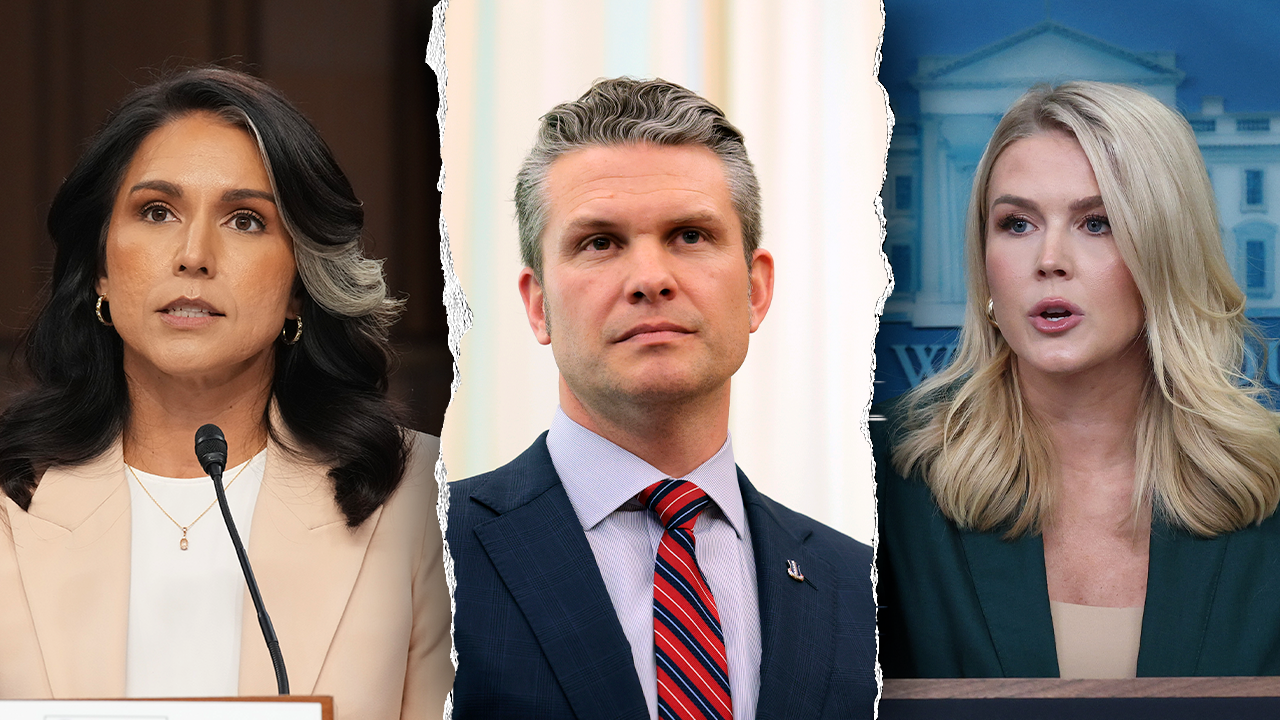
NEWYou can now listen to Fox News articles!
A trio of key Trump administration officials — Secretary of Defense Pete Hegseth, Director of National Intelligence Tulsi Gabbard and White House press secretary Karoline Leavitt — are in the midst of facing their first major foreign policy test in their high-profile admin roles after Israel launched preemptive strikes on Iran and President Donald Trump weighs involving the U.S. in the conflict.
The trio ascended to their roles with widespread fanfare among many MAGA conservatives, though many critics just months ago questioned if their prior careers prepared them for what was to come. The current flaring tensions with the Islamic Republic could be the final arbiter of which side was correct.
Defense Secretary Pete Hegseth. (Fox News / The Will Cain Show)
“President Trump leads from the front, and he has assembled a highly-qualified, world-class team that has helped him achieve numerous foreign policy accomplishments this term,” White House spokeswoman Anna Kelly told Fox Digital on Wednesday when asked about the trio’s test on Iran. “The American people trust the President to make the right decisions that keep them safe, and he has empowered his team to meet the moment and advance his foreign policy goals.”
Defense Secretary Pete Hegseth
Secretary Hegseth was one of Trump’s more controversial nominees among critics, as Democrat lawmakers and left-wing pundits slammed Hegseth as unqualified for the job.
IRAN WARNS US JOINING CONFLICT WOULD MEAN ‘ALL-OUT WAR,’ REFUSES DEMANDS TO GIVE UP DISPUTED NUCLEAR PROGRAM
“This hearing now seems to be a hearing about whether or not women are qualified to serve in combat. And not about whether or not you are qualified to be secretary of defense,” Illinois Democrat Sen. Tammy Duckworth said during Hegseth’s confirmation hearing before the Senate Armed Services Committee in January. “And let me just say that the American people need a secretary of defense who’s ready to lead on day one. You are not that person.”
“Is Pete Hegseth truly the best we have to offer?” asked Democrat Sen. Jack Reed of Rhode Island, ranking member of the committee.
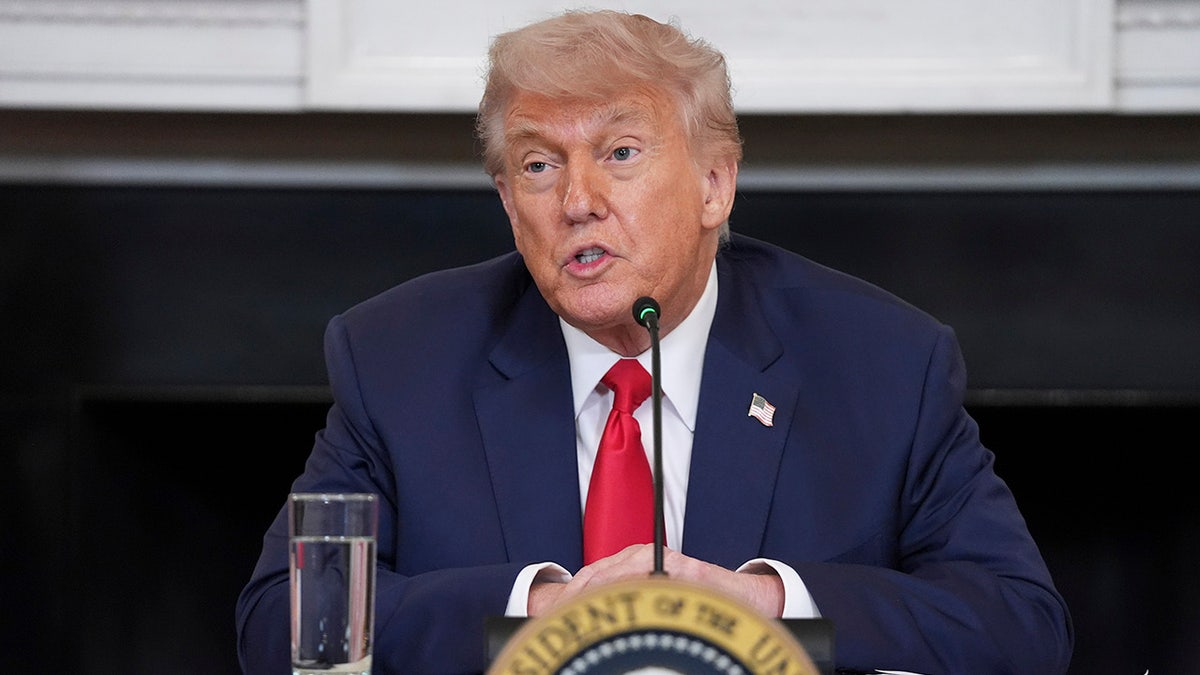
President Donald Trump speaks during a roundtable. (Evan Vucci/The Associated Press)
Hegseth battled against claims he would lower previous standards for the secretary of Defense and that his vows to strengthen the military could be bluster once he was in the role and juggling oversight of the entire military.
“As I’ve said to many of you in our private meetings, when President Trump chose me for this position, the primary charge he gave me was to bring the warrior culture back to the Department of Defense,” he said in his opening statement during his confirmation hearing. “He, like me, wants a Pentagon laser focused on warfighting, lethality, meritocracy, standards, and readiness. That’s it. That is my job.”
Hegseth was confirmed to the role after Vice President JD Vance issued a tie-breaking vote when Republican Sens. Lisa Murkowski, Susan Collins and Mitch McConnell joined Democrats in voting against the confirmation.
Hegseth is an Ivy League graduate and former National Guard officer who was deployed to Iraq, Afghanistan and Guantanamo Bay during his military career, which began in 2003. He is also the recipient of a handful of military awards, including two Bronze Stars. He appeared before the Senate Armed Services Committee on Wednesday and was pressed about the Israel–Iran conflict.
“They should have made a deal,” Hegseth said.
“President Trump’s word means something — the world understands that,” Hegseth said, referring to Trump’s repeated pressure on Iran to make a deal with the U.S. on its nuclear program as the conflict spiraled.
VANCE DEFENDS TRUMP’S IRAN POSITION AMID ‘CRAZY STUFF ON SOCIAL MEDIA’
“And at the Defense Department, our job is to stand ready and prepared with options. And that’s precisely what we’re doing,” Hegseth continued.
He did not reveal if the U.S. would assist Israel in the ongoing strikes on Iran, but that the Pentagon is in the midst of preparing options for Trump.
Any potential U.S. involvement in the strikes could pull the country into war against Iran.
“I may do it, I may not do it,” Trump said Wednesday on whether he would order a strike on Iran. “I mean, nobody knows what I’m going to do.”
Hegseth was among high-profile Trump officials who joined Trump in the White House’s Situation Room as the president and his team closely monitor the flaring conflict.
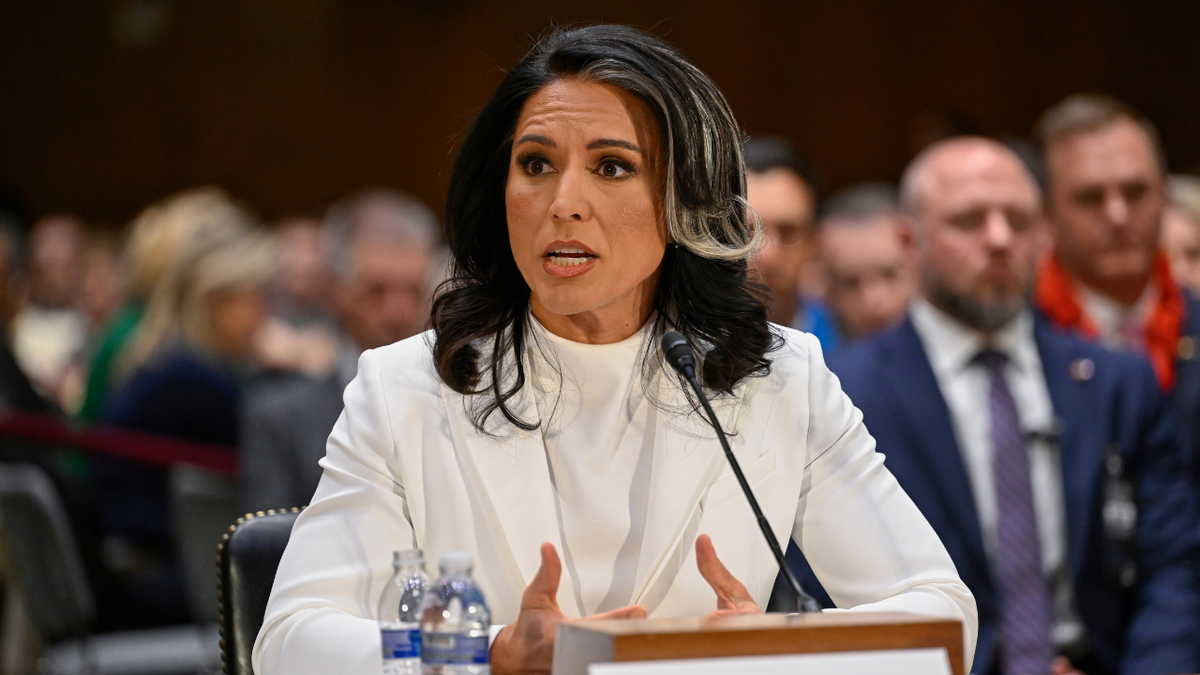
Director of National Intelligence Tulsi Gabbard. (John McDonnell/The Associated Press)
Director of National Intelligence Tulsi Gabbard
Director of National Intelligence Gabbard is another Trump official who faced an intense confirmation hearing as critics argued she was unqualified for the role.
Gabbard is a former Democrat who served in the U.S. House representing Hawaii from 2013 to 2021, a former member of the House Armed Services Committee and an Iraq war veteran. However, she had never held a formal position within the intelligence community before serving as director of national intelligence.
Ahead of her confirmation, Gabbard’s critics slammed her as lacking the qualifications for the role, questioning her judgment over a 2017 meeting with then-Syrian dictator Bashar Assad, labeling her as sympathetic toward Russia, and balking at her previous favorable remarks related to former National Security Agency whistleblower Edward Snowden.
USS NIMITZ CARRIER STRIKE GROUP SAILING TOWARD MIDDLE EAST AHEAD OF SCHEDULE, US OFFICIAL SAYS
“Those who oppose my nomination imply that I am loyal to something or someone other than God, my own conscience and the Constitution of the United States,” she said during her confirmation hearing. “Accusing me of being Trump’s puppet, Putin’s puppet, Assad’s puppet, a guru’s puppet, Modi’s puppet, not recognizing the absurdity of simultaneously being the puppet of five different puppet masters.”
She ultimately was confirmed in a 52–48 vote.
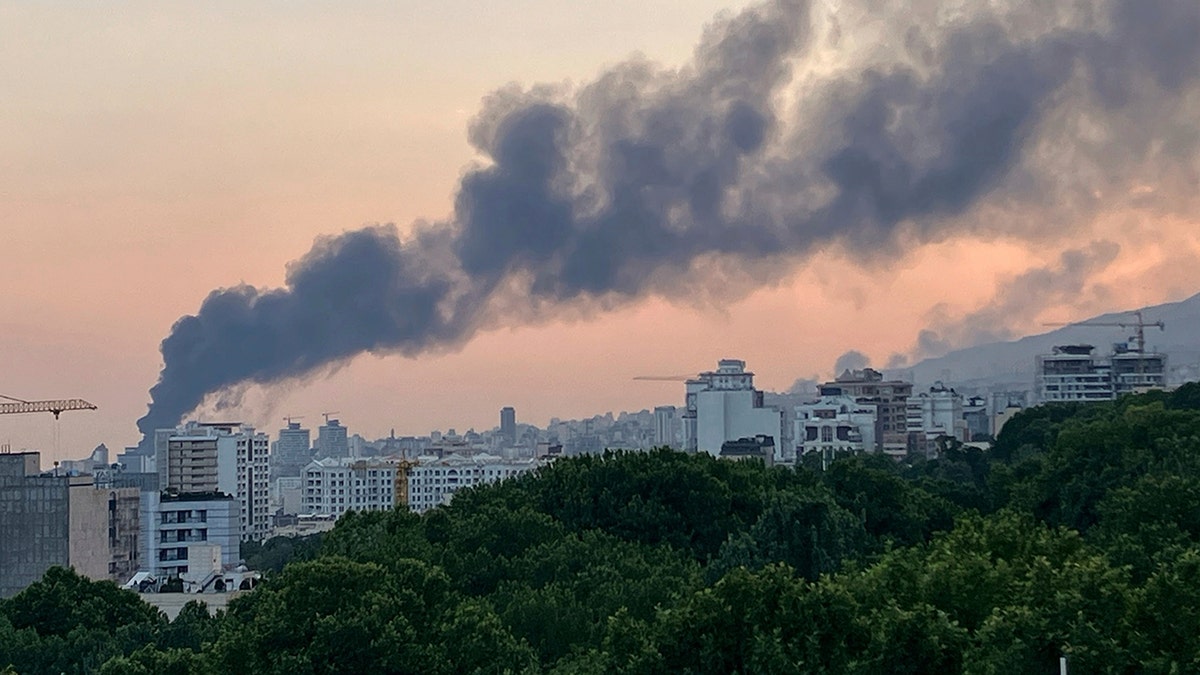
Smoke rises from the building of Iran’s state-run television after an Israeli strike in Tehran, Iran, on Monday, June 16, 2025. (AP Photo)
Gabbard’s March testimony before the Senate dismissing concerns Iran was actively building a nuclear weapon is back under the nation’s microscope after Israel launched preemptive strikes on Iran. Israel’s strikes were in direct response to Israeli intelligence showing Iran could produce a nuclear weapon in a short span of time.
Trump was asked about Gabbard’s testimony while traveling back to Washington Monday evening from the G7 summit in Canada, and the president said he did not “care” what Gabbard had to say in previous testimony, arguing he believes Iran is close to building a nuke.
“You’ve always said that you don’t believe Iran should be able to have a nuclear weapon,” a reporter asked Trump while aboard Air Force One on Monday. “But how close do you personally think that they were to getting one?”
“Very close,” Trump responded.
“Because Tulsi Gabbard testified in March that the intelligence community said Iran wasn’t building a nuclear weapon,” the reporter continued.
Trump shot back, “I don’t care what she said. I think they were very close to having one.”
When Gabbard appeared before the Senate Intelligence Committee in March, she delivered a statement on behalf of the intelligence community that included testimony that Iran was not actively building a nuclear weapon.
“Iran’s cyber operations and capabilities also present a serious threat to U.S. networks and data,” Gabbard told the committee on March 26.
The intelligence community “continues to assess that Iran is not building a nuclear weapon, and Supreme Leader Khamenei has not authorized the nuclear weapons program that he suspended in 2003,” she said. She did add that “Iran’s enriched uranium stockpile is at its highest levels and is unprecedented for a state without nuclear weapons.”
“Iran will likely continue efforts to counter Israel and press for U.S. military withdrawal from the region by aiding, arming and helping to reconstitute its loose consortium of like-minded terrorist actors, which it refers to as its axis of resistance,” she warned.
However, as critics picked apart Gabbard’s past comments, the White House stressed that Gabbard and Trump are closely aligned on Iran.
A White House official told Fox News Digital Tuesday afternoon that Trump and Gabbard are closely aligned and that the distinction being raised between Gabbard’s March testimony and Trump’s remarks that Iran is “very close” to getting a nuclear weapon is one without a difference.
The official noted that Gabbard underscored in her March testimony that Iran had the resources to potentially build a nuclear weapon. Her testimony in March reflected intelligence she received that Iran was not building a weapon at the time but that the country could do so based on the resources it amassed for such an endeavor.

White House press secretary Karoline Leavitt. (Jim Watson/AFP via Getty Images)
Press Secretary Karoline Leavitt
Leavitt is the youngest press secretary in U.S. history, assuming the role at age 27.
Some liberal critics, such as Joy Behar of “The View,” attempted to discount her appointment when she was first tapped by Trump, and she has since emerged as a Trump administration firebrand during her routine White House press briefings.
Though Leavitt has overwhelmingly been praised by supporters of the president for her defense of the administration and repeated fiery exchanges with left-wing media outlets during briefings, her tenure has overwhelmingly focused on domestic issues.
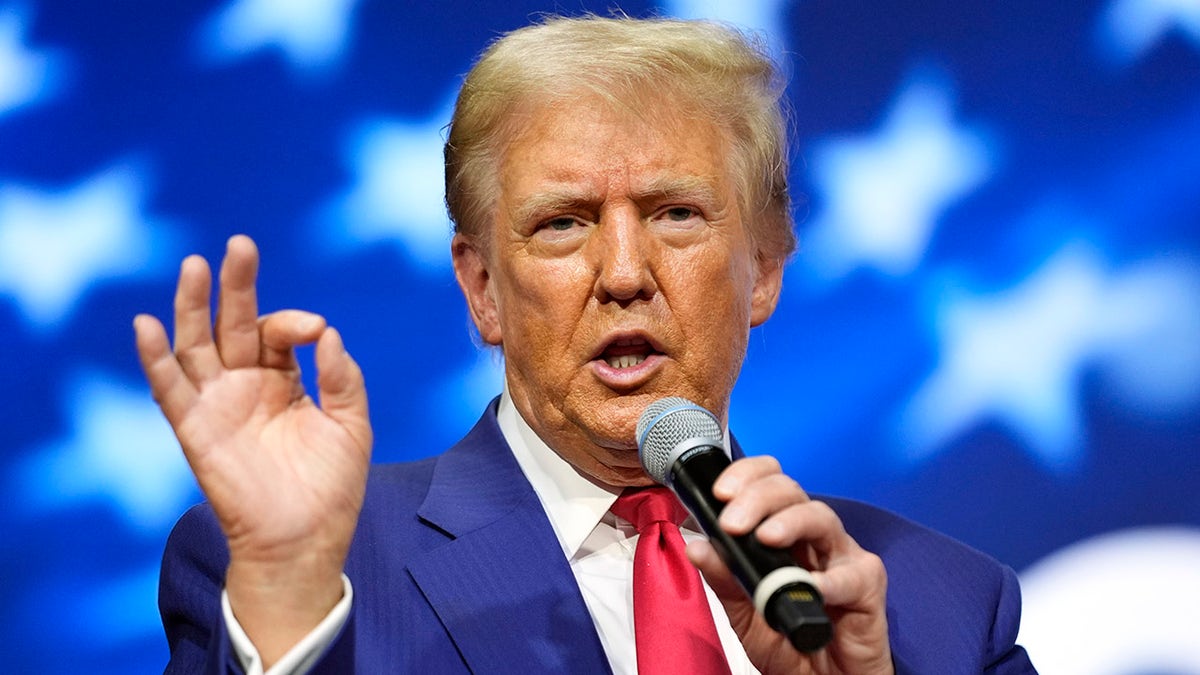
President Donald Trump is in the midst of monitoring the flaring conflict between Israel and Iran. (Alex Brandon/The Associated Press )
Leavitt has kept the nation updated on issues such as mass deportation efforts, Trump’s ongoing list of executive orders affecting policies from transgender issues to electric vehicles, national tragedies such as the terror attack in Boulder targeting Jewish Americans and Trump’s wide-ranging tariff policy that affects foreign nations.
Though the administration entered office with a war raging between Russia and Ukraine, as well as the ongoing war in Israel after Hamas attacked the country in 2023, the Israel–Iran conflict provides Leavitt with her first major international crisis that could include U.S. involvement.
Leavitt’s highly anticipated first press briefing since Israel launched its preemptive strikes is scheduled for Thursday.
Politics
Commentary: Archbishop Gomez starts to stand up for L.A. right when the city needs him

For years in this columna, I have repeatedly posed a simple challenge to Archbishop José H. Gomez:
Stand up for Los Angeles, because L.A. needs you.
The head of the largest Catholic diocese in the United States has largely stood athwart the liberal city he’s supposed to minister since he assumed his seat in 2011 but especially since the COVID-19 pandemic. He has railed against “woke” culture and refused to meet with progressive Catholic groups. When the Dodgers in 2023 honored the Sisters of Perpetual Indulgence, a drag troupe that wears nun’s habits while raising funds for the marginalized, he led a special Mass at the Cathedral of Our Lady of the Angels that amounted to a public exorcism.
Most perplexingly, the Mexico-born archbishop stayed largely quiet as the Herod that’s Donald Trump promised to clamp down on legal immigration and deport people without legal status during his 2024 presidential run. As head of the United States Conference of Catholic Bishops at the end of last decade, Gomez wrote and spoke movingly about the need to treat all immigrants with dignity and fix this country’s broken system once and for all. But his gradual turn to the right as archbishop has gone so far that the National Catholic Reporter, where I’m an occasional contributor, labeled him a “failed culture warrior” when they anointed him their Newsmaker for that year.
Gomez’s devolution was especially dispiriting because L.A. Catholic leaders have taught their American peers how to embrace Latino immigrants ever since Archbishop John Cantwell helped refugees from Mexico’s Cristero War resettle in the city in the 1920s. Clerical legends like Luis Olivares and Richard Estrada transformed La Placita Church near Olvera Street into a sanctuary for Central American immigrants during the 1980s and 1990s in the face of threats from the feds. Gomez’s predecessor, Cardinal Roger Mahony, long drew national attention for attacking anti-immigrant legislation during his sermons and marching alongside immigrant rights protesters, a cross to bear that Gomez never warmed up to.
So when L.A. began to push back against Donald Trump’s immigration raids earlier this month only to see an onerous federal crackdown, I expected Gomez to do little even as L.A.-area priests bore witness to what was happening.
Father Gregory Boyle of Homeboy Industries appeared in a viral video proclaiming the righteous, if well-worn, message that no human being is illegal, but also that “we stand with anybody who’s demonized or left out, or excluded, or seen as disposable … it’s kinda how we roll here.” His fellow Jesuit, Dolores Mission pastor Brendan Busse, was there with activists during a June 9 migra raid at a factory in the Garment District that saw SEIU California president David Huerta arrested for civil disobedience.
I especially admired Father Peter O’Reilly, who was a priest in the L.A. Archdiocese for 44 years before retiring in 2005. The 90-year-old cleric was at Gloria Molina Grand Park on June 8, the day protesters torched Waymo cars, just blocks away from the Cathedral of Our Lady of the Angels. O’Reilly told a television station in his native Ireland afterward that it was important for him be there to let immigrants know “we were with them and for them.”
Gomez? The archbishop put out a weak-salsa statement around that time about how he was “troubled” by the raids. His Instagram account urged people a few days later to light a candle and pray for peace. That same day, Diocese of Orange Bishop Kevin Vann and his auxiliary bishops posted a letter condemning the raids, which they maintained “invoke our worst instincts” and “spread crippling fear and anxieties upon the hard-working, everyday faithful among us.”
You know things are upside-down in this world when O.C. is more down for immigrant rights than L.A.
Faith leaders lead a prayer vigil in Gloria Molina Grand Park on June 10 to stand in support of community members facing immigration raids in Los Angeles.
(Jason Armond / Los Angeles Times)
I wanted to blast Gomez last week but held back, praying that he might change for the better. So I’m happy to report he’s starting to.
On June 10, the same day he posted his Instagram call for prayer, the archbishop also attended an evening interfaith vigil along with Boyle, Busse and other faith leaders to tell a crowd of over 1,000 people, “Immigration is about more than politics — it is about us, the kind of people we want to be.” Gomez asked all parishes in the L.A. Archdiocese the following day to hold special Masses with L.A.’s current immigration troubles in mind. He led the lunchtime one in the cathedral, telling parishioners during his homily, “We want to go out and console our neighbors and strengthen their hearts and encourage them to keep the faith.”
Gomez saved his most stinging remarks for this Tuesday in his regular column for Angelus News, the archdiocese’s publication. While not able to resist a shot at the Biden administration, the soft-spoken prelate nevertheless said of Trump’s raids: “This is not policy, it is punishment, and it can only result in cruel and arbitrary outcomes.” Accompanying his thoughts was a photo of a young woman holding a sign that read, “Jesus was an Immigrant” in front of California Highway Patrol officers in riot gear.
“For him to show up was meaningful,” Busse said. Since Trump’s inauguration, Dolores Mission has hosted training for the rapid response networks that have alerted people about immigration raids. “But I hope there’s more. The diocese has a huge capacity for organizing, and I hope that his leadership can move people in a large way.”
Busse said the first instinct of too many religious leaders is “to step back into a place of safety” when controversy emerges. “But there’s also an invitation to be brave and courageous. What we need to do is step into the situation to bring the peace that we’re praying for.”
Joseph Tómas McKellar is executive director of PICO California, a faith-based community organizing network that co-sponsored the interfaith vigil last week where Gomez spoke. The nonprofit used to teach citizenship and English classes in the L.A. Archdiocese and McKellar remembered Gomez attending a gathering of social justice groups in Modesto in 2017 as an active participant “in these small group conversations.”
The PICO California head said Gomez’s recent reemergence from his years in the political wilderness “was deeply encouraging. … Our bishops and the leaders of our denominations have a special responsibility to exercise prophetic leadership. The prophets are the ones who denounce what is broken in this world, but also announce a different vision. I do see him more embracing more that call and that challenge to reflect.”
An archdiocese spokesperson said Gomez was unavailable for comment because he was at a retreat for the United States Conference of Catholic Bishops. Earlier this week , the group released a reflection declaring, “No one can turn a deaf ear to the palpable cries of anxiety and fear heard in communities throughout the country in the wake of a surge in immigration enforcement activities.”
I have no expectations that Archbishop Gomez’s politics will ever fully reflect L.A.’s progressive soul. He remains the only American bishop affiliated with the orthodox Opus Dei movement and sits on the ecclesiastical advisory board for the Napa Institute, an organization of rich Catholics that has labored mightily over the past decade to tilt the church rightward. Its co-founder, Orange County-based multimillionaire developer Tim Busch, wrote earlier this year with no irony that Trump’s administration “is the most Christian I’ve ever seen” and told The Times in 2023 that Gomez “is one of my closest advisors.”
But I’m glad Gomez is moving in the right direction, right when the city needs him the most. I continue to pray his voice gets bolder and stronger and that the region’s millions of Catholics — and all Angelenos, for that matter — follow the archbishop’s call to action to help immigrants while pushing him to do more.
I hope Gomez keeps in his heart what Busse told me near the end of our chat: “If the faith community doesn’t stand up when there’s a moral issue to stand up for, then I don’t know what happens.”
-

 Business1 week ago
Business1 week agoYale’s Endowment Selling Private Equity Stakes as Trump Targets Ivies
-

 Culture1 week ago
Culture1 week agoBarbara Holdridge, Whose Record Label Foretold Audiobooks, Dies at 95
-

 News1 week ago
News1 week agoYosemite Bans Large Flags From El Capitan, Criminalizing Protests
-

 Culture1 week ago
Culture1 week agoA Murdered Journalist’s Unfinished Book About the Amazon Gets Completed and Published
-

 Education1 week ago
Education1 week agoWhat Happens to Harvard if Trump Successfully Bars Its International Students?
-
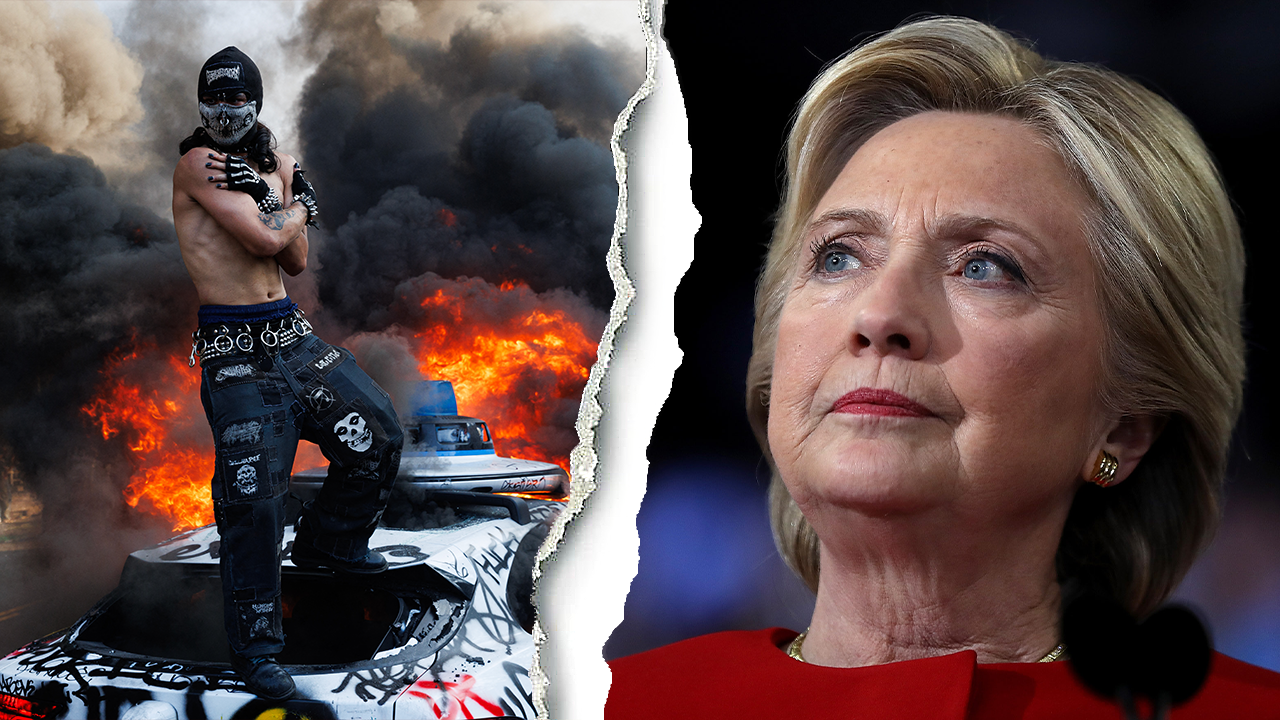
 Politics1 week ago
Politics1 week agoFox News Politics Newsletter: Hillary ‘Can’t Handle the Ratio'
-

 News1 week ago
News1 week agoTrumps to Attend ‘Les Misérables’ at Kennedy Center
-

 World1 week ago
World1 week agoSudan’s paramilitary RSF say they seized key zone bordering Egypt, Libya

